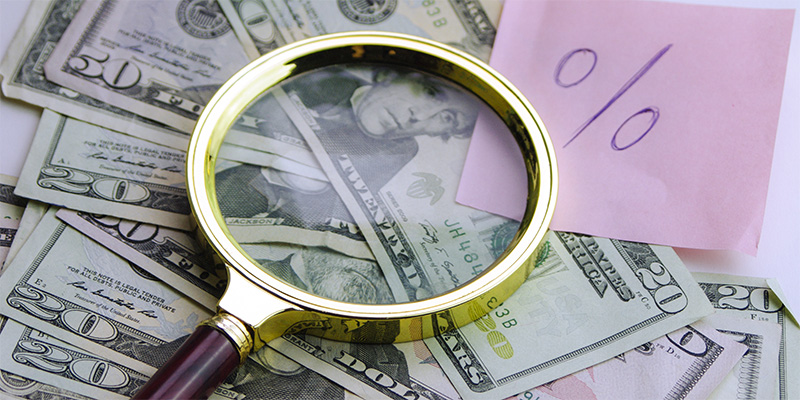
20 Finance Laws to Live By
Ritholtz Wealth Management's Ben Carlson has talked about the “20 most important personal finance laws to live by” in Fortune before. Today, I want to share Ben's rules and my take on each topic.

Establish a Healthy Relationship with Money
There are two types of people in this world: cheap f***s (CFs)—people who spend a little—and high rollers—people who spend a lot.

The Killer Instinct Separates Winners from Losers
I have had about 10–12 interns over the years, and I have taught a lot of college students, and occasionally I have smart interns or smart college students, but the one thing that absolutely cannot be taught is the killer instinct. You either have it or you don’t. You either have the insatiable desire to succeed or you don’t.

Property Taxes—Where Does Your State Rank?
If you own a home or you're thinking about buying one, I have some bad news.

Don’t Light Your Money on Fire
I know a lot of people who have gone broke because they told themselves, “I can afford the monthly payment.”

This Number Dictates How Much You Can Save
The other night, my wife and I went out for dinner. When it came time to order dessert, I couldn’t help but think, “Is it really worth shelling out $13 for a piece of cake when we have other expenses, like building a big house?”
If I were to go bankrupt, though, it wouldn't be because of dessert. I often see personal finance advice telling people not to order appetizers at restaurants because they're not a good deal. But denying yourself that little pleasure for the sake of saving a trivial amount of money doesn't make much sense.
Some people believe that these small expenses add up over time, like appetizers and desserts. They really don't. Even if you went out for dinner once a week and ordered dessert every time, it would only amount to about $600 per year. And realistically, you won't even do that.
Would you go bankrupt over $600 a year? Definitely not. Bankruptcy is more likely to happen if you make big financial mistakes, like buying an expensive car with high monthly payments or having huge student loans. Those are the things that can ruin you financially, not the small expenses.
|
Over the past 50 years, this portfolio has gone up 4,491% and is as set-it-and-forget-it as it comes. Jared Dillian's Awesome Portfolio is designed to outperform over decades, no matter what happens. If you're looking to take the stress and guesswork out of investing and sleep better at night knowing you have a proven plan for success in the markets, click here to see if the Awesome Portfolio is right for you. |
How to Move the Needle
Your overall financial health is less about discretionary consumption than you think. If you really want to move the needle and save enough for a comfortable retirement...
You need to control your fixed monthly costs.
What does that include? Well, there’s your rent or mortgage, which you have to pay no matter what. That might be $2,000 or $3,000 a month, or more. Plus $500 straight out the door for your car loan payment. Then you have credit card bills and probably student loans.
A good exercise is to add up all your fixed costs and look at the monthly total. This number is very important because it dictates how much you can save.
Here’s an example to get you started.
-
Home Mortgage & Insurance: $2,500/month
-
Utilities: $200/month
-
Food & Grocery: $500/month
-
Medical: $800/month
-
Car, Gas, & Insurance: $750/month
-
Mobile Phone: $100/month
-
Student Loan: $200/month
-
Total: $5,050/month
It All Comes Back to the House
Quite often, someone’s fixed expenses are very large, and their discretionary purchases are minimal. This all comes back to the house...
If you live in an expensive house, you’re going to fill it with expensive stuff. You’re going to buy an expensive car and wear expensive clothes. You will also have neighbors with expensive hobbies. So, pretty quickly, you will acquire expensive hobbies too.
Really, an expensive house leads to an expensive life.
But what happens when the money stops rolling in? Sure, you can eliminate small discretionary expenses overnight. But it’s not that easy to downsize to a smaller house in a cheaper neighborhood. It’s not that easy to sell your expensive furniture and your expensive car. This stuff takes time, assuming you can do it at all.
Even then, you’re going to lose money in the process—especially if you need to sell quickly because you’ll be willing to accept a lower sale price for all this stuff.
You’re much better off buying the cheaper house from the start.
The Sign That Your Fixed Costs Are Too High
Back in my Wall Street days, I worked with a lot of guys who bought expensive houses and cars. Their fixed costs were enormous. Then Wall Street hit a downturn, these guys started making less money, and it put them in a real bind.
This happens to people up and down the income ladder all the time. In fact, I’m sure you know someone in this sort of predicament right now.
This is where your emergency funds come in...
Longtime readers know I encourage everyone to set aside $10,000 or enough cash to cover six months of living expenses—whichever is greater. You should keep this money in a separate bank account, far away from the money you use on a regular basis. (Please do not invest it in the stock market. You want zero risk of loss here.)
In the example we looked at earlier, the fixed monthly costs were $5,050. So, our hypothetical person would need $30,300 in emergency funds.
How many people have that much cash on hand? Do you?
Do the math and figure out what your fixed monthly expenses are. Then multiply that number by six. This is your emergency fund number.
If you cannot set that much cash aside, it’s a sign that your fixed costs are too high, and you need to make some changes.
Maybe it’s time for a cheaper house... which is part of a long list of strategies I cover in Saving and Investing for the Retirement You Want. If you’re ready to move the needle and save enough for the retirement you really want, I encourage you to download a copy of this special report now.

Jared Dillian
|